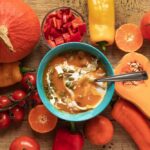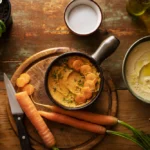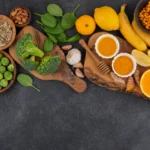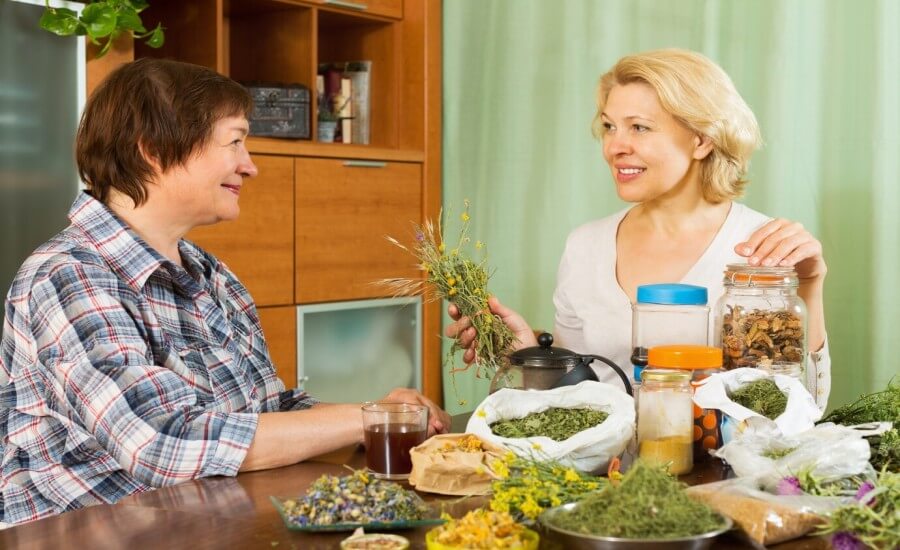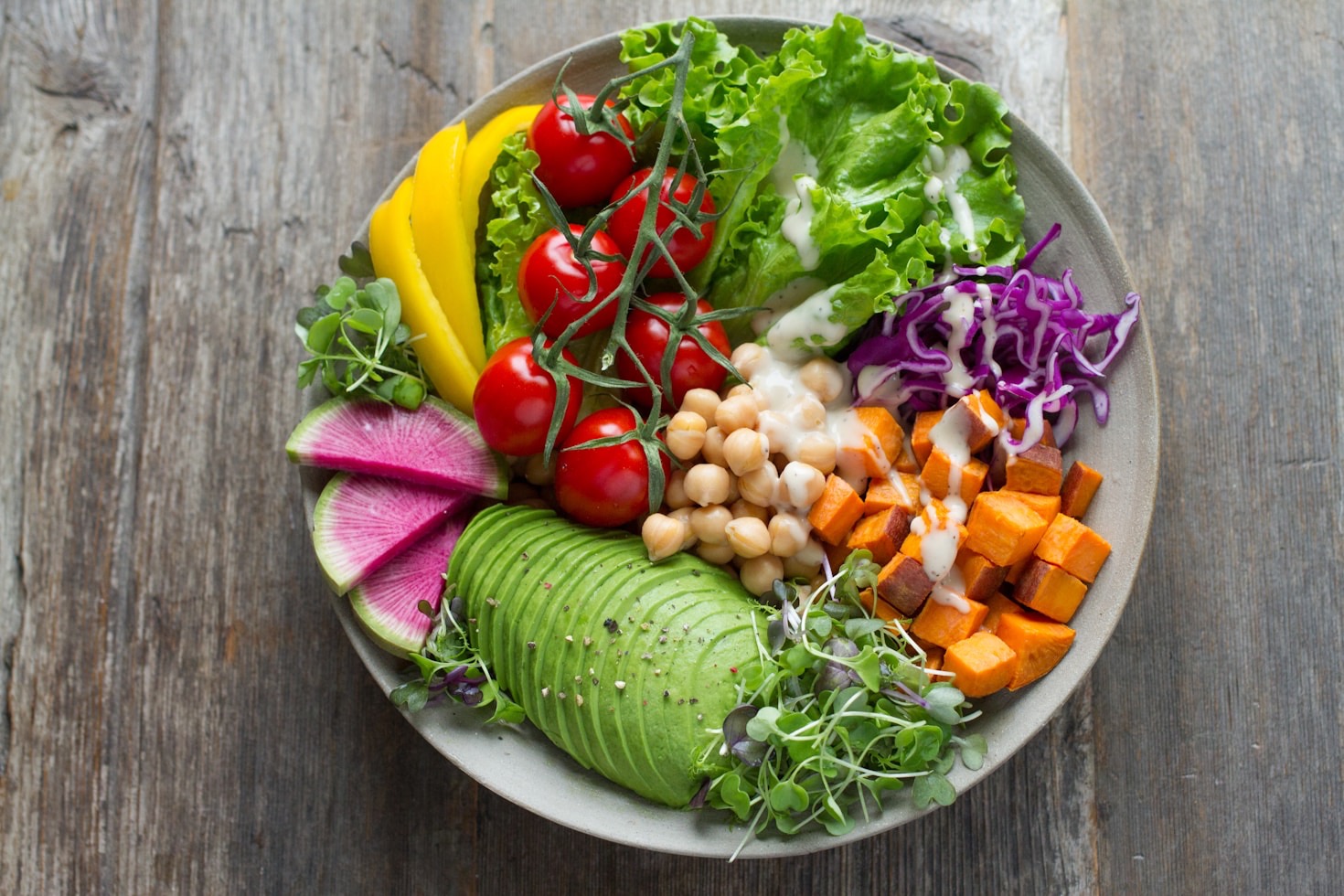Chronic inflammation represents a common thread linking many of today’s most prevalent health challenges, from arthritis and digestive disorders to cardiovascular disease and autoimmune conditions. This comprehensive analysis explores how plant-based foods can powerfully combat inflammation through multiple perspectives – nutritional biochemistry, medical research, culinary applications, traditional healing wisdom, and practical implementation. By weaving together diverse fields of knowledge, we reveal how specific vegan foods contain potent compounds that modulate inflammatory pathways, support immune balance, and facilitate natural healing processes. From polyphenol-rich berries and curcumin-loaded turmeric to omega-3-packed flaxseeds and gut-supporting fermented foods, the plant kingdom offers an impressive pharmacy of anti-inflammatory compounds accessible through daily meals. Understanding and applying this knowledge creates a sustainable approach to reducing chronic inflammation while supporting overall wellness through evidence-based nutrition.
LENS 1: Nutritional Biochemistry
The Cellular Battlefield: Understanding Inflammation at the Molecular Level
Inflammation is fundamentally a complex biochemical cascade designed to protect the body. When functioning properly, acute inflammation helps repair damaged tissues and defend against pathogens. However, when this process becomes chronic, it creates ongoing cellular damage. Research from the Department of Nutrition at Harvard T.H. Chan School of Public Health has identified specific plant compounds that intercept and modulate inflammatory pathways at multiple points in this cascade.

Nature’s Pharmacy: Anti-Inflammatory Compounds in Plants
Plants have evolved thousands of bioactive compounds to protect themselves from environmental threats. When consumed, many of these phytochemicals directly influence human inflammatory processes. Dr. David Heber, founding director of the UCLA Center for Human Nutrition, explains that “plant foods contain a remarkable array of compounds that act as natural COX-2 inhibitors, NF-κB modulators, and antioxidants – essentially serving as nature’s anti-inflammatory drugs without the side effects.”
Nutritional Deep Dive: Key Anti-Inflammatory Plant Compounds
| Compound Class | Top Vegan Sources | Biochemical Mechanisms | Inflammatory Conditions Addressed |
| Polyphenols | Berries, cherries, dark chocolate, green tea | NF-κB inhibition, antioxidant enzyme upregulation | Joint inflammation, vascular inflammation |
| Carotenoids | Orange/yellow vegetables, dark leafy greens | Cell membrane protection, gene expression modulation | Lung inflammation, skin inflammation |
| Organosulfur compounds | Garlic, onions, leeks, cruciferous vegetables | Nrf2 pathway activation, detoxification enhancement | Systemic inflammation, respiratory inflammation |
| Terpenoids | Citrus peels, herbs, berries | COX-2 inhibition, proinflammatory cytokine reduction | Neuroinflammation, digestive inflammation |
| Omega-3 fatty acids | Flaxseeds, chia seeds, walnuts, algae | Resolution phase promotion, specialized pro-resolving mediator production | Joint inflammation, neuroinflammation |
Antioxidant Power: Neutralizing Inflammatory Free Radicals
“Oxidative stress and inflammation operate in a vicious cycle,” notes Dr. Andrew Weil, integrative medicine physician and researcher. “Free radicals stimulate inflammatory pathways, while inflammation generates more free radicals.” Plant foods counter this cycle through multiple mechanisms:
- Direct neutralization of free radicals through donation of electrons
- Upregulation of the body’s endogenous antioxidant enzymes
- Protection of cell membranes from oxidative damage
- Prevention of lipid peroxidation that triggers inflammatory cascades
- Chelation of pro-oxidant metals that catalyze free radical production
The ORAC (Oxygen Radical Absorbance Capacity) scale measures foods’ antioxidant potential, with deeply pigmented plant foods typically scoring highest. Spices like cloves, cinnamon, and oregano; berries including blueberries and blackberries; and dark chocolate demonstrate particularly potent antioxidant capacities.
Common Misconceptions vs. Reality
Misconception: All inflammation is harmful and should be completely eliminated.
Reality: Acute inflammation is a necessary healing response; the goal is to prevent or resolve chronic, low-grade inflammation while maintaining healthy immune function.
Misconception: Antioxidant supplements provide the same benefits as whole plant foods.
Reality: Research consistently shows that isolated antioxidant supplements fail to provide the same health benefits as whole foods, which contain complex synergistic compounds that work together.
Voice of Experience: The Biochemist’s Perspective
“What fascinates me about plant anti-inflammatories is their intelligent selectivity,” shares Dr. Rhonda Patrick, biochemist specializing in nutritional health. “Unlike many pharmaceutical anti-inflammatories that broadly suppress inflammatory pathways, plant compounds often modulate specific aspects of inflammation while preserving beneficial immune responses. For example, curcumin inhibits NF-κB signaling that drives chronic inflammation while still allowing acute inflammatory responses needed for healing and pathogen defense. This selective action likely explains why these compounds can reduce chronic inflammation without the side effects associated with pharmaceutical options.”
LENS 2: Clinical Research
From Theory to Therapy: Evidence for Plant-Based Anti-Inflammatory Effects
Beyond laboratory studies, clinical research increasingly validates the anti-inflammatory effects of plant-based dietary patterns. Controlled trials measuring inflammatory biomarkers provide compelling evidence for specific foods and dietary approaches.

Biomarker Validation: Measuring Anti-Inflammatory Effects
Clinical researchers track several key inflammatory biomarkers to evaluate dietary interventions:
- C-Reactive Protein (CRP): This liver-produced protein rises with systemic inflammation and strongly predicts cardiovascular risk. Multiple studies show vegan diets significantly reduce CRP levels.
- Interleukins: These signaling molecules, particularly IL-6 and IL-1β, coordinate inflammatory responses. Plant-rich diets consistently lower their concentrations.
- Tumor Necrosis Factor-alpha (TNF-α): This cytokine plays a central role in autoimmune conditions. Studies show reductions with increased consumption of berries, spices, and omega-3-rich seeds.
- Fibrinogen: This clotting factor increases with inflammation and cardiovascular risk. Cruciferous vegetables and flavonoid-rich foods help normalize levels.
- White Blood Cell Count: Elevated counts often indicate inflammation. Plant-based dietary patterns typically normalize this marker.
Intervention Studies: Plants vs. Inflammatory Conditions
Clinical trials investigating plant-based interventions for specific inflammatory conditions show promising results:
- Rheumatoid Arthritis: A 16-week intervention using a whole-food vegan diet demonstrated significant reductions in joint pain, morning stiffness, and disease activity scores alongside decreased CRP and ESR (erythrocyte sedimentation rate).
- Inflammatory Bowel Disease: Trials incorporating high-fiber plant foods with careful individualization show improvements in remission maintenance and reduced flare frequency.
- Metabolic Inflammation: Studies of vegan diets consistently demonstrate improvements in insulin sensitivity, reduced visceral fat, and decreased metabolic inflammation markers.
- Skin Conditions: Research on conditions like eczema and psoriasis shows benefits from diets rich in omega-3 fatty acids from flaxseed and antioxidant-rich fruits and vegetables.
Clinical Research Deep Dive: Anti-Inflammatory Plant Foods in Human Studies
| Food Category | Key Clinical Studies | Measured Outcomes | Effective Dosage |
| Berries | Harvard Nurses’ Health Study, PREDIMED trial | Reduced CRP, lowered IL-6, decreased TNF-α | 1/2 cup daily |
| Cruciferous vegetables | Epic study, Shanghai Women’s Health Study | Decreased inflammatory markers, reduced cancer risk | 5+ servings weekly |
| Turmeric/Curcumin | Multiple RA and IBD trials | Reduced joint inflammation, improved IBD symptom scores | 1-3g daily (with black pepper) |
| Omega-3-rich seeds | ALA supplementation trials | Improved inflammatory lipid profiles, reduced CRP | 1-2 tablespoons daily |
| Green tea | Japanese cohort studies, intervention trials | Lowered oxidative stress markers, reduced inflammation | 3-5 cups daily |
Synergistic Approaches: When the Whole Exceeds Its Parts
“While individual plant foods show anti-inflammatory effects, the most compelling clinical evidence comes from studies of comprehensive dietary patterns,” explains Dr. Monica Aggarwal, cardiologist specializing in nutritional approaches to heart disease. “The Mediterranean, DASH, and whole-food plant-based dietary patterns consistently outperform single-food interventions, suggesting synergistic benefits when anti-inflammatory compounds are consumed together.”
This synergy likely stems from multiple mechanisms targeting different aspects of the inflammatory pathway simultaneously:
- Polyphenols from berries inhibiting NF-κB activation
- Omega-3 fats from seeds promoting resolution of inflammation
- Fiber modulating gut microbiome to reduce endotoxin exposure
- Antioxidants neutralizing free radicals that amplify inflammation
- Alkalizing compounds balancing acid-forming dietary components
Voice of Experience: The Clinical Researcher’s Perspective
“In twenty years of conducting nutritional intervention studies, I’ve observed that patients with inflammatory conditions often experience significant improvement within weeks of adopting an anti-inflammatory plant-based diet,” notes Dr. Michael Greger, physician and clinical researcher. “What’s particularly remarkable is the dose-response relationship – the more comprehensively patients implement these dietary principles, the more dramatic their inflammatory biomarker improvements. Many patients achieve reductions in CRP comparable to what we see with pharmaceutical interventions, but with additional benefits across multiple systems rather than side effects.”
LENS 3: Culinary Applications
From Market to Table: Optimizing Anti-Inflammatory Benefits
The anti-inflammatory potential of plant foods is significantly influenced by selection, storage, preparation, and cooking methods. Culinary choices can either enhance or diminish the bioavailability of key compounds.

Prep Techniques: Releasing Active Compounds
Certain preparation techniques dramatically increase the bioavailability of anti-inflammatory compounds:
- Alliums (garlic, onions): Crushing or finely chopping and allowing to rest for 10-15 minutes before cooking maximizes formation of allicin and other organosulfur compounds.
- Cruciferous vegetables: Chopping and allowing to rest activates the myrosinase enzyme that converts glucosinolates into active isothiocyanates like sulforaphane.
- Turmeric: Combining with black pepper increases curcumin absorption by up to 2,000% through piperine’s inhibition of curcumin metabolism in the liver.
- Carotenoid-rich vegetables: Light cooking in the presence of healthy fats significantly enhances absorption of fat-soluble compounds.
- Berries: Gentle thawing of frozen berries actually increases antioxidant availability compared to fresh berries stored for several days.
Cooking Methods: Preserving Anti-Inflammatory Power
“Different cooking methods can either enhance or destroy anti-inflammatory compounds,” explains Chef AJ, culinary instructor specializing in therapeutic plant-based cooking. “Generally, methods that minimize heat exposure while softening cell walls to release compounds provide optimal nutrition.”
Culinary Deep Dive: Optimal Cooking Methods for Anti-Inflammatory Preservation
| Food Category | Best Cooking Methods | Methods to Limit | Culinary Partners for Enhanced Benefits |
| Leafy greens | Light steaming, quick wilting | Extended boiling | Citrus dressing (vitamin C enhances iron absorption) |
| Alliums | Low-temp sautéing after resting | High-heat immediate cooking | Acid ingredients like tomatoes or vinegar |
| Cruciferous vegetables | Steaming, light stir-frying | Boiling, pressure cooking | Mustard powder to replace inactivated myrosinase |
| Spices and herbs | Blooming in warm oil | Excessive heat exposure | Fat-based mediums to extract fat-soluble compounds |
| Berries and fruits | Raw, or gentle warming | High-heat methods | Nut/seed creams to enhance fat-soluble compound absorption |
Flavor Synergies: Anti-Inflammatory Taste Combinations
Certain flavor combinations not only enhance taste but create synergistic anti-inflammatory effects:
- Sweet-tart: Berries with citrus amplify antioxidant activity
- Pungent-aromatic: Garlic and herbs combine different classes of anti-inflammatory compounds
- Bitter-bright: Turmeric and black pepper enhance curcumin bioavailability
- Earthy-acidic: Legumes with tomatoes improve mineral absorption and provide complementary compounds
- Umami-rich: Mushrooms with miso create immune-modulating synergies
Alternative Approaches: Anti-Inflammatory Preparation Methods
Beyond conventional cooking, several preparation techniques may enhance anti-inflammatory benefits:
- Fermentation: Enhances bioavailability of polyphenols, creates novel bioactive compounds
- Sprouting: Activates enzymes that increase antioxidant content of seeds and grains
- Cold infusion: Preserves heat-sensitive compounds while extracting water-soluble antioxidants
- Spice blends: Combines synergistic compounds that target multiple inflammatory pathways
- Raw food techniques: Preserves enzyme activity while making nutrients accessible
Voice of Experience: The Culinary Expert’s Perspective
“When I work with clients suffering from inflammatory conditions, I emphasize practical culinary techniques that maximize both flavor and therapeutic potential,” shares Rebecca Katz, chef and author specializing in culinary nutrition. “Simple changes like adding freshly ground black pepper to turmeric-containing dishes, chopping garlic 10 minutes before cooking, or adding lemon juice to greens after cooking can dramatically increase anti-inflammatory benefits without requiring complex preparations. The most powerful approach combines deeply flavorful food with optimal preparation – because ultimately, these foods only work if people actually enjoy eating them regularly.”
LENS 4: Traditional Healing Systems
Ancient Wisdom Meets Modern Science: Traditional Anti-Inflammatory Approaches
Long before modern scientific validation, traditional healing systems worldwide recognized the anti-inflammatory properties of specific plants. These time-tested approaches often align remarkably well with contemporary research findings.
[PERSPECTIVE IMAGE: Visual mosaic showing traditional anti-inflammatory plants from different cultural healing traditions with connecting elements to their modern scientific validation]
Cross-Cultural Insights: Global Anti-Inflammatory Traditions
Multiple healing traditions independently identified many of the same plants as anti-inflammatory agents:
- Ayurvedic Medicine: India’s 5,000-year-old medical system classifies foods by their inflammatory potential and prescribes cooling, pacifying foods for inflammatory conditions. Key anti-inflammatory staples include turmeric, ginger, holy basil (tulsi), and amla (Indian gooseberry).
- Traditional Chinese Medicine: This system views inflammation as excess heat or stagnant qi and prescribes specific foods to restore balance. Anti-inflammatory staples include ginger, mung beans, mushrooms like reishi and shiitake, and cooling fruits.
- Mediterranean Traditional Healing: This regional approach emphasizes anti-inflammatory ingredients like olive oil, nuts, legumes, and dark leafy greens to maintain vitality and prevent disease.
- Indigenous American Traditions: Various Native American healing systems utilize anti-inflammatory botanicals including elderberry, wild cherry bark, and medicinal mushrooms to address inflammatory conditions.
Traditional Wisdom Deep Dive: Anti-Inflammatory Plants Across Cultures
| Healing System | Key Plants | Traditional Uses | Modern Validation |
| Ayurveda | Turmeric, ginger, boswellia | Joint inflammation, digestive inflammation | Confirmed curcumin, gingerol and boswellic acid effects |
| Traditional Chinese Medicine | Ginger, reishi mushroom, green tea | “Cooling excess heat,” reducing “fire toxins” | Validated anti-inflammatory mechanisms of key compounds |
| Mediterranean tradition | Olive leaves, grape leaves, wild greens | “Cooling the blood,” reducing swelling | Confirmed polyphenol and antioxidant activities |
| Unani medicine | Black seed, saffron, rose | Balancing “hot” conditions | Identified thymoquinone and crocetin effects |
| Native American medicine | Elderberry, wild cherry, white pine | Fever reduction, respiratory inflammation | Confirmed flavonoid and antioxidant properties |
Timing and Seasonality: Traditional Inflammatory Intelligence
Traditional systems often emphasize timing and seasonality in managing inflammation:
- Consuming cooling foods during summer months and inflammatory triggers
- Utilizing spring bitter greens for detoxification processes
- Incorporating warming anti-inflammatories like ginger during colder seasons
- Aligning eating patterns with circadian rhythms to support natural anti-inflammatory processes
“These traditional timing principles reflect sophisticated observations about seasonal inflammatory patterns,” notes Dr. John Douillard, Ayurvedic practitioner and physiologist. “Modern chronobiology now confirms that inflammatory markers follow circadian patterns and seasonal shifts, suggesting our ancestors recognized important temporal aspects of inflammation management.”
Constitutional Considerations: Personalized Anti-Inflammatory Approaches
Traditional systems typically personalize anti-inflammatory recommendations based on individual constitutional types:
- Ayurvedic doshas: Vata, pitta, and kapha types receive different anti-inflammatory protocols
- TCM constitutions: Hot/cold, damp/dry constitutional patterns dictate specific approaches
- Traditional European systems: Recognize sanguine, choleric, melancholic, and phlegmatic types requiring different interventions
“This personalized approach anticipated what we now understand about biochemical individuality,” explains Dr. Victoria Maizes, executive director of the University of Arizona Center for Integrative Medicine. “Genetic differences in inflammatory response pathways and detoxification systems mean that anti-inflammatory protocols should indeed be tailored to individual patterns.”
Voice of Experience: The Traditional Healing Perspective
“Working within both Ayurvedic tradition and modern functional medicine has shown me the remarkable convergence between ancient wisdom and current research,” shares Dr. Akil Palanisamy, physician and author specializing in integrative medicine. “For example, Ayurveda has long recommended consuming turmeric with black pepper and fat—a preparation now scientifically validated to enhance curcumin bioavailability by 2,000%. This isn’t coincidence; it’s the result of millennia of careful observation. The most effective approach integrates this traditional wisdom with modern scientific validation, combining the depth of time-tested knowledge with the precision of contemporary research.”
LENS 5: Practical Implementation
From Knowledge to Action: Building Your Anti-Inflammatory Eating Pattern
Translating anti-inflammatory principles into sustainable daily practices requires practical strategies that accommodate real-world constraints of time, budget, preference, and cooking skill.

The Anti-Inflammatory Food Pyramid: Building Your Daily Pattern
Creating an anti-inflammatory eating pattern involves strategic food categories consumed in appropriate proportions:
- Foundation (multiple daily servings): Non-starchy vegetables, particularly greens, cruciferous vegetables, and colorful varieties
- Core daily foods: Berries and pigmented fruits, herbs and spices, omega-3 sources (flax, chia, walnuts), legumes, intact whole grains
- Regular inclusions: Mushrooms, tea (green, black, herbal), dark chocolate, fermented foods
- Limited consumption: Refined carbohydrates, added oils, high-glycemic foods, artificial ingredients
Progressive Implementation: Sustainable Change Strategies
“The most effective anti-inflammatory diet is the one you can actually maintain,” notes registered dietitian Brenda Davis. “Starting with strategic additions rather than focusing on eliminations helps build sustainable patterns.”
Effective implementation approaches include:
- Anti-inflammatory additions: Begin by adding berries, leafy greens, and spices before focusing on eliminations
- Strategic substitutions: Replace inflammatory ingredients with anti-inflammatory alternatives (olive oil for butter, berries for sweetened desserts)
- Inflammatory trigger identification: Use symptom journals to identify personal inflammatory triggers
- Preparation batching: Prepare anti-inflammatory staples weekly for convenient incorporation
- Flavor-first approach: Focus on enhancing flavor through anti-inflammatory ingredients rather than restriction messaging
Daily Impact: Practical Anti-Inflammatory Implementation
| Challenge | Solution | Benefit |
| Limited cooking time | Weekly batch cooking of anti-inflammatory staples | Ensures health-supporting foods are always available |
| Dining out strategically | Research menus for vegetable-centric, legume-based dishes | Maintains dietary consistency in social situations |
| Budget constraints | Focus on affordable anti-inflammatories (cabbage, legumes, frozen berries) | Provides consistent benefits without financial strain |
| Family acceptance | Gradually modify favorite recipes with anti-inflammatory additions | Creates sustainable family-wide changes |
| Travel challenges | Pack portable anti-inflammatories (spices, seeds, tea) | Maintains inflammation management during disrupted routines |
Tracking Progress: Measuring Anti-Inflammatory Success
Beyond symptom improvement, several approaches can help track anti-inflammatory progress:
- Inflammatory biomarker testing: Periodic CRP, homocysteine, or specialized inflammatory panel testing
- Symptom journals: Tracking specific inflammatory symptoms and correlations with dietary patterns
- Morning stiffness duration: Decreasing time indicates reduced systemic inflammation
- Recovery metrics: Improved exercise recovery time often indicates decreasing inflammation
- Skin appearance: Reduced redness, swelling, and irritation reflect systemic inflammatory status
Voice of Experience: The Practical Implementer’s Perspective
“After decades of guiding clients through anti-inflammatory dietary transitions, I’ve found that successful implementation hinges on personalization and sustainability,” shares Dr. Michael Klaper, physician specializing in nutritional medicine. “Cookie-cutter approaches often fail because they don’t account for individual inflammatory triggers, preferences, and practical constraints. The most successful clients start with a foundation of universal anti-inflammatory foods like berries, greens, and omega-3-rich seeds, then systematically identify their personal inflammatory triggers through careful elimination and challenge protocols. This personalized approach leads to sustainable results because it’s tailored to their unique biology and lifestyle realities.”
Perspective Intersection Matrix
| Nutritional Biochemistry | Clinical Research | Culinary Applications | Traditional Healing | Practical Implementation | |
| Nutritional Biochemistry | — | Biomarkers validate predicted biochemical effects | Preparation methods affect phytonutrient bioavailability | Traditional combinations often enhance bioavailability | Nutrient timing affects inflammatory response |
| Clinical Research | Mechanism studies explain clinical outcomes | — | Whole-food preparations outperform isolates in studies | Traditional preparations often match clinical protocols | Study designs must account for real-world adherence |
| Culinary Applications | Food synergies affect absorption & metabolism | Preparation methods influence clinical outcomes | — | Traditional recipes often maximize bioactive compounds | Practical preparation methods enhance long-term consistency |
| Traditional Healing | Modern research validates traditional mechanism theories | Observational data from traditional systems informs research | Traditional preparation methods optimize compound extraction | — | Culturally appropriate implementations improve adherence |
| Practical Implementation | Biochemical understanding guides strategic food choices | Research findings translate to practical protocols | Culinary techniques enable sustained integration | Traditional wisdom offers tested implementation patterns | — |
Synthesis & Recommendations
The multi-dimensional analysis of anti-inflammatory vegan foods reveals powerful convergences across biochemistry, clinical research, culinary traditions, ancient healing systems, and practical implementation strategies. This integrated understanding provides a comprehensive framework for utilizing plant foods to systematically address chronic inflammation through evidence-based, sustainable approaches.
For individuals seeking to implement anti-inflammatory eating patterns, consider these synthesis recommendations:
- Prioritize diversity of anti-inflammatory compounds by consuming a wide spectrum of colorful plants daily
- Optimize preparation methods to maximize bioavailability of key compounds
- Incorporate strategic food pairings that enhance absorption and efficacy
- Focus on personalized trigger identification to address individual inflammatory patterns
- Implement progressive changes that build sustainable habits rather than unsustainable restrictions
- Integrate wisdom from traditional systems validated by modern research
- Track meaningful indicators that reflect your personal inflammatory response
The power of anti-inflammatory plant foods extends far beyond single nutrients or isolated mechanisms. Their true potential emerges from the synergistic effects of thousands of compounds working through multiple pathways to restore balance to the body’s inflammatory responses. By thoughtfully implementing these principles, individuals can harness nature’s anti-inflammatory pharmacy through delicious, nourishing daily meals.
Further Areas of Exploration
- Chronobiology of inflammation: Timing anti-inflammatory foods for optimal impact
- Personalized anti-inflammatory approaches based on genetic testing
- Emerging research on lesser-known plant compounds with anti-inflammatory potential
- The gut-inflammation connection and prebiotic approaches to inflammatory modulation
- Anti-inflammatory protocols for specific conditions (arthritis, IBD, cardiovascular disease)
- Environmental influences on inflammatory response and dietary countermeasures
- Emerging technologies for measuring personal inflammatory responses to specific foods
